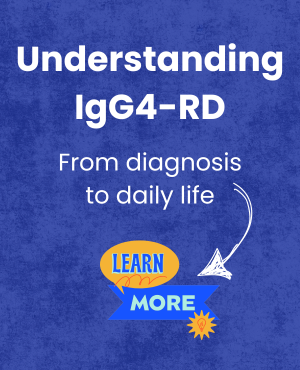Greater glucocorticoid use linked to more side effects in IgG4-RD: Study
Toxicities include cardiovascular, gastrointestinal, and infection-related issues

A greater use of glucocorticoids — a class of steroid medications — was associated with more toxicities, such as cardiovascular, gastrointestinal, and infection-related issues in people with immunoglobulin G4-related disease (IgG4-RD), a study finds.
The side effects were particularly common where IgG4-RD affected the pancreas and bile ducts, that is, the tubes that transport the digestive fluid bile out of the liver to the intestines.
“The identification of effective and well-tolerated glucocorticoid-sparing treatment options may allow for reduced glucocorticoid exposure in patients with IgG4RD, with the subsequent potential to improve patient outcomes and reduce the clinical burden of this disease,” the study’s researchers wrote. The study, “Burden of Glucocorticoid Use and Risk of Toxicities Among Patients with Immunoglobulin-G4-Related Disease: A Retrospective US-Based Claims Study,” was published in Rheumatology and Therapy. It was funded by Amgen, which markets Uplizna (inebilizumab-cdon), a nonsteroidal medication that recently became the first approved IgG4-RD treatment.
In IgG4-RD, abnormal immune cell infiltration drives inflammation and scarring in various organs. This leads to the formation of masses or enlargements, and can eventually cause irreversible organ damage and dysfunction. In the disease, periods of worsening inflammatory disease activity and exacerbated symptoms (relapses) are typically interspersed with periods of clinical stability, or remission.
Studying glucocorticoid-exposure toxicities
Glucocorticoids, a type of steroid with powerful immunosuppressive activity, “are the most commonly used first-line treatment of IgG4-RD,” the researchers wrote. They’re usually given at a high dose for a few weeks to push the disease into remission and are then slowly tapered down.
But even with an initial response, relapses in IgG4-RD patients are common, requiring additional, nonsteroidal immunosuppressive treatment, for which there’s not much evidence of efficacy. Therefore, “patients are often treated with prolonged or repeated courses of glucocorticoids,” whose long-term use can result in a host of potentially serious side effects, to which IgG4-RD patients with certain disease manifestations may be especially vulnerable. These include an involvement of the pancreas, which produces digestive enzymes and the blood sugar-regulating hormone insulin. Still, there are limited real-world data on the toxicities associated with glucocorticoid exposure in people with IgG4-RD.
Here, scientists reviewed commercial insurance claims data in the U.S. from January 2011 to June 2022 to examine the use of glucocorticoids and the occurrence of related toxicities among 295 adults with IgG4-RD under age 65 during the first year after their diagnosis.
Around half of them (50.8%) were determined to have low glucocorticoid usage, a mean daily dose equivalent to less than 5 mg of the glucocorticoid prednisone, and the other half (49.2%) had high use, or an equivalent daily dose of 5 mg or more.
Glucocorticoid usage was highest in the first three months after a diagnosis and slowly declined after that. After a year, about a quarter of the people in the low-use group were still receiving glucocorticoids, compared with about 60% in the high-use group. Throughout the study period, around half the patients in either group received nonsteroidal immunosuppressive medications.
Effects of low, high steroid use compared
Compared with the low-use group, more people in the high-use group had disease manifestations in the pancreas (46.9% vs. 19.3%) and bile ducts (39.3% vs. 16.7%). They also had a generally higher burden of coexisting conditions, or comorbidities, including high blood pressure (40.7% vs. 22.7%), type 2 diabetes (23.4% vs. 11.3%), and exocrine pancreatic insufficiency, where the pancreas doesn’t make enough digestive enzymes (8.3% vs. less than 3.3%).
Over a year, 66% of the low glucocorticoid group and 74.5% of the high-use group had some steroid-related toxicity. People in the high-use group had a significantly higher mean number of toxicities than the low-use group (1.8 vs. 1.2) and were significantly more likely to have at least three toxicities throughout the year (29% vs. 13.3%).
Significant group differences were seen not only in the three most commonly reported classes of toxicities — cardiovascular, gastrointestinal, and infection-related issues — but also in less common ones such as type 2 diabetes and weak bones.
“These findings highlight that the benefits of prescribing glucocorticoids to patients with IgG4-RD in clinical practice should be weighed against the risk of associated toxicity,” wrote the researchers, who said the data also reinforce the need “for effective and tolerable nonsteroidal agents to provide adequate disease management, while reducing exposure to glucocorticoids and the associated risks of toxicities.”
A greater proportion of patients with pancreatic or biliary disease manifestations were classified as high glucocorticoid users relative to the entire study population. This subgroup also tended to see higher rates of steroid-related toxicities, including cardiovascular, gastrointestinal, and infection-related problems, regardless of their glucocorticoid use.
“The clinical burden of glucocorticoid use may be intensified among this subgroup,” the scientists wrote, noting that the need for nonsteroidal options may be particularly profound for these patients. They said more research is needed to confirm the observed relationships as a result of data limitations related to pulling information from commercial insurance claims records.






